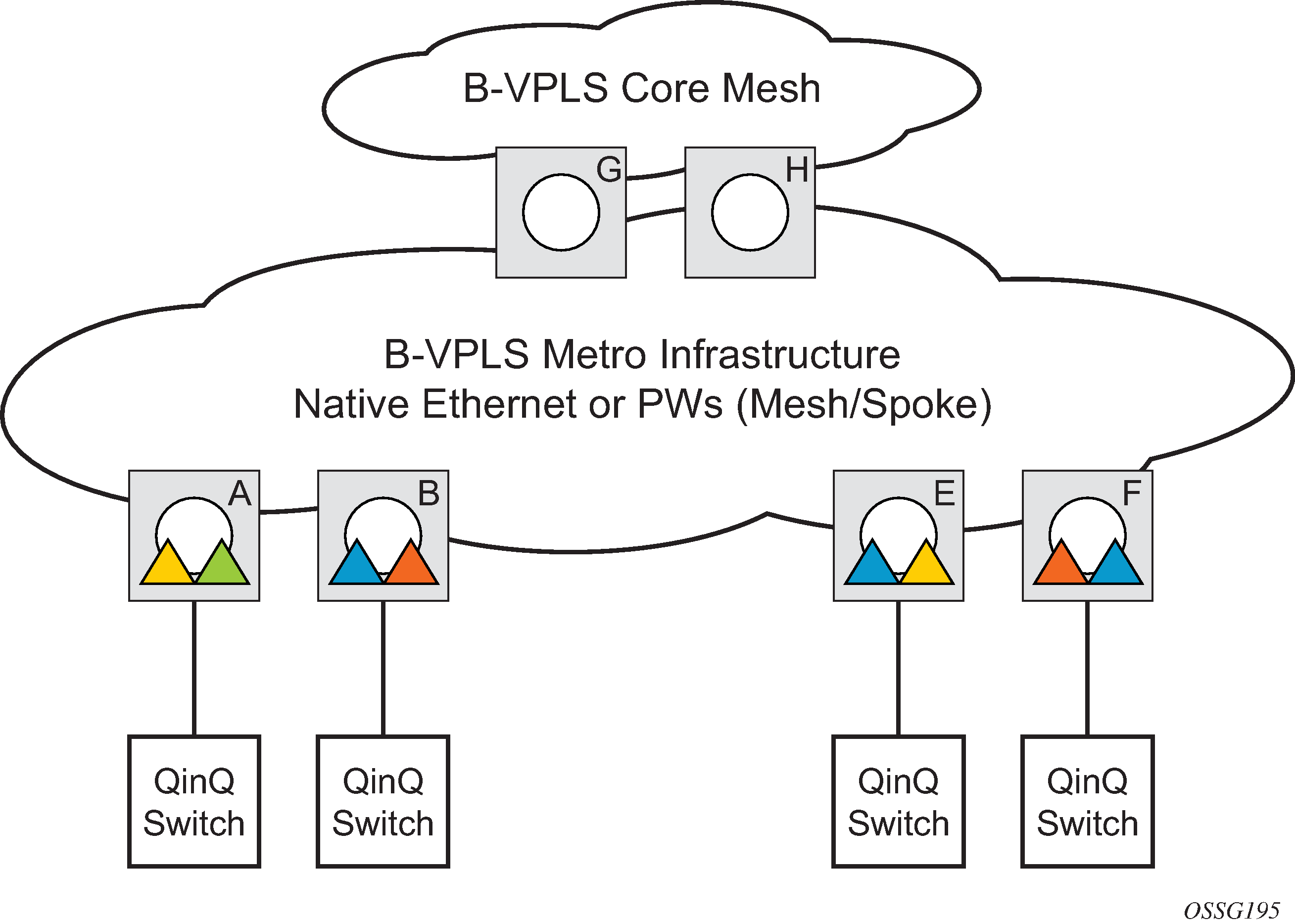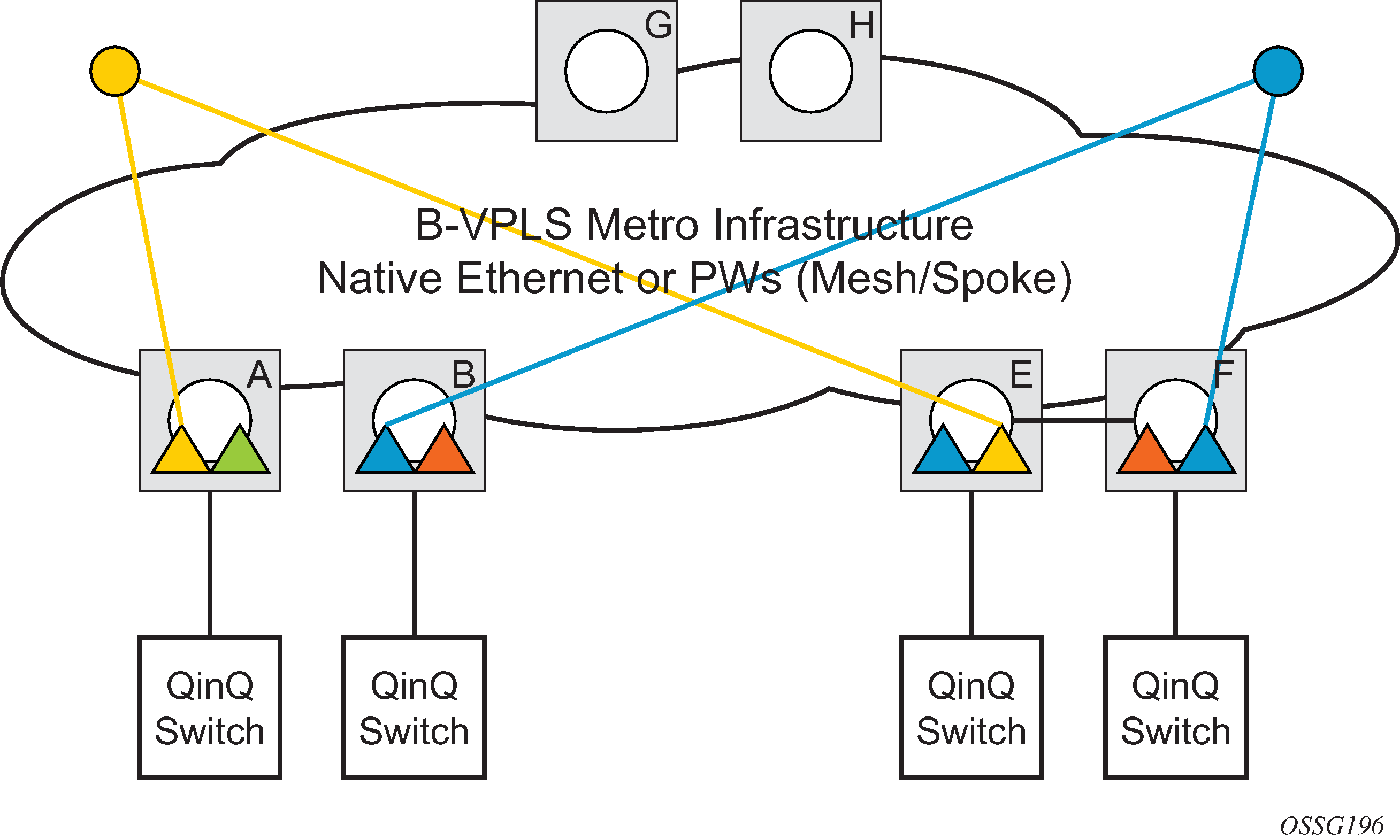IEEE 802.1ah supports an M:1 model where multiple customer services, represented by ISIDs, are transported through a common infrastructure (B-component). The Nokia PBB implementation supports the M:1 model allowing for a service architecture where multiple customer services (I-VPLS or Epipe) can be transported through a common B-VPLS infrastructure as depicted in Figure: Customer services transported in 1 B-VPLS (M:1 model).

The B-VPLS infrastructure represented by the white circles is used to transport multiple customer services represented by the triangles of different colors. This service architecture minimizes the number of provisioning touches and reduces the load in the core PEs: for example, G and H use less VPLS instances and pseudowire.
In a real life deployment, different customer VPNs do not share the same community of interest – for example, VPN instances may be located on different PBB PEs. The M:1 model depicted in Figure: Flood containment requirement in M:1 model requires a per VPN flood containment mechanism so that VPN traffic is distributed just to the B-VPLS locations that have customer VPN sites: for example, flooded traffic originated in the blue I-VPLS should be distributed just to the PBB PEs where blue I-VPLS instances are present – PBB PE B, E and F.
Per customer VPN distribution trees need to be created dynamically throughout the BVPLS as new customer I-VPLS instances are added in the PBB PEs.
The Nokia PBB implementation employs the IEEE 802.1ak Multiple MAC Registration Protocol (MMRP) to dynamically build per I-VPLS distribution trees inside a specific B-VPLS infrastructure.
IEEE 802.1ak Multiple Registration Protocol (MRP) – Specifies changes to IEEE Std 802.1Q that provide a replacement for the GARP, GMRP and GVRP protocols. MMRP application of IEEE 802.1ak specifies the procedures that allow the registration/de-registration of MAC addresses over an Ethernet switched infrastructure.
In the PBB case, as I-VPLS instances are enabled in a specific PE, a group B-MAC address is by default instantiated using the standard based PBB Group OUI and the ISID value associated with the I-VPLS.
When a new I-VPLS instance is configured in a PE, the IEEE 802.1ak MMRP application is automatically invoked to advertise the presence of the related group B-MAC on all active B-VPLS SAPs and SDP bindings.
When at least two I-VPLS instances with the same ISID value are present in a B-VPLS, an optimal distribution tree is built by MMRP in the related B-VPLS infrastructure as depicted in Figure: Flood containment requirement in M:1 model.
